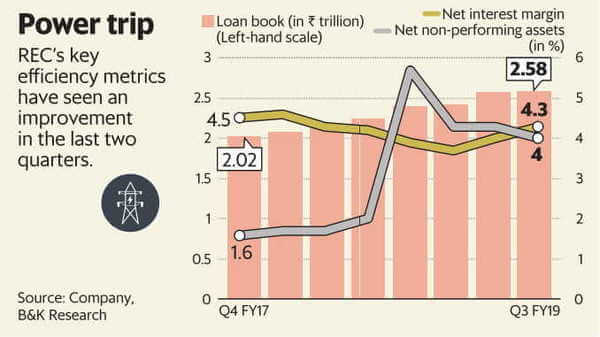Investors need to worry if PFC’s inferior profitability rubs off on REC and that high dividend payouts could be a thing of the past. Analysts aver that after the PFC-REC deal, lending priorities could see a change and adversely affect REC’s margins.
REC Ltd is set to become a subsidiary of Power Finance Corp. Ltd (PFC). The big question is: Will investors continue to see a spark in the stock or prefer to go short? REC’s stock has been electrifying since its acquisition by PFC was announced. The stock gained 49.3% since 1 December 2018, compared to a 5.4% increase in the Nifty 500 index.
At first, it was a relief rally because reports that REC would be the one using its cash to acquire PFC came unfounded. But now, relief seems to have turned into exuberance.
The corporation will continue as a public sector entity, and its borrowing costs will be similar. Analysts are ruling out many synergies with no major benefits accruing in operating expenses. Besides, while REC could merge with PFC in the long run, that may not garner many benefits. “We see limited cost synergies, though some benefits on lending yields should accrue,” noted Deutsche Equities India Pvt. Ltd in a note to clients.
Investors need to worry if PFC’s inferior profitability rubs off on REC. In December 2018, REC’s net interest margin was 4.3%, compared to 3.4% for PFC.
While both corporations are into financing power projects, their business segments are different. REC largely finances transmission and distribution, and Pand FC funds generation. After the acquisition, analysts believe lending priorities could change and adversely affect REC’s margins.
Another worry for investors is that the high dividend payouts could now be behind.
REC recently declared an interim dividend of ₹11 a share. This yields its dividend yield for FY19 at current market prices to 8.5%. Analysts reckon that as it will cease to be a government subsidiary, the corporation is likely to reduce its dividend payouts to shore up its lending business.
Its business has been doing well lately with an increased loan book. The December 2018 quarter registered 15.3% growth year-on-year. Stress has been lower. Net non-performing assets (NPAs) contracted to 4%, down from the September 2018 quarter. Some of the old stress in the book is resolved through bankruptcy. Besides, the net interest margin improved in the December quarter.
Still, the stock’s recent performance has raised its valuation profile. REC’s price-to-book-value is up to 0.83 times from 0.6 times. Gains accruing to shareholders from the synergies have already been priced in. What remains now is how fast the lending business can expand in the new structure.








